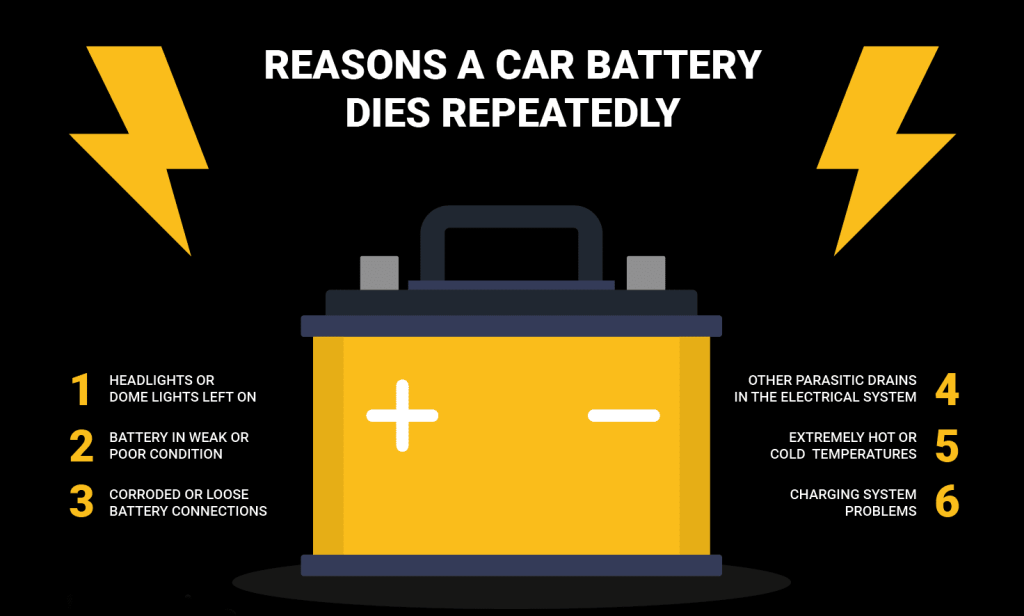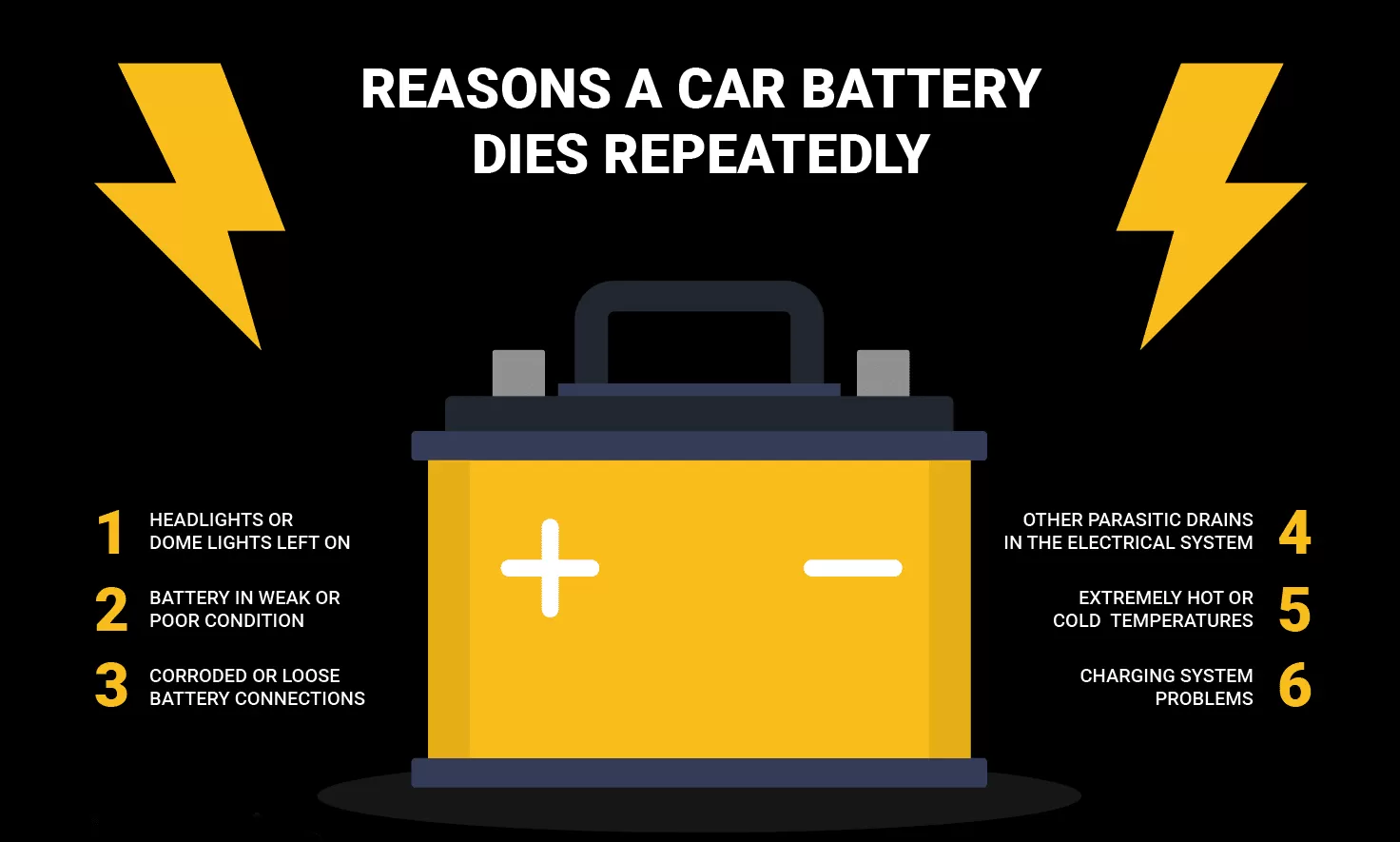
Car battery not charging
Content
- The main reasons why the battery may not charge
- External Causes of Insufficient Charging
- How do you know if the battery is not charging?
- The car battery is not being charged by the generator. Why?
- Because of what the battery may not be charged from the charger
- What can be done when the car battery is not charging
- Causes of malfunction of starter car batteries
- Graphical representation of the situation when the battery is not being charged. Infographics
If the battery is not charging, which is already more than 5-7 years old, then the answer to the question: - “why?” lies most likely on the surface. After all, any battery has its own service life and over time loses some of its main performance characteristics. But what if the battery has served no more than 2 or 3 years, or even less? Where then to look reasons why doesn't the battery want to charge? Moreover, this situation arises not only when recharging from a generator in a car, but even when it is replenished by a charger. The answers need to be looked for, depending on the situation, by completing a series of checks followed by procedures to correct the problem.
Most often, you can expect 5 main reasons manifested in eight different situations:
| Situation | What to do |
|---|---|
| Oxidized terminals | Clean and lubricate with special grease |
| Broken/loose alternator belt | Stretch or change |
| Broken diode bridge | Change one or all diodes |
| Defective voltage regulator | Replace graphite brushes and regulator itself |
| Deep discharge | Increase the charging voltage or do a polarity reversal |
| Incorrect electrolyte density | Check and bring to the desired value |
| Sulfation of plates | Perform a polarity reversal, and then several cycles of full charge / discharge with a small current |
| One of the cans is closed | Actions to restore a battery with such a defect are ineffective |
The main reasons why the battery may not charge
To understand in detail all possible malfunctions due to which the car battery does not charge, first of all, clearly define the situation:
| the battery quickly discharges and runs out | or he | does not charge at all (does not take charge) |
In general, when the battery refuses to charge, the following options are allowed:
- sulfation of plates;
- destruction of plates;
- oxidation of terminals;
- decrease in the density of the electrolyte;
- closure.
But do not worry about it right away, everything is not always so bad, especially if such a problem arose while driving (the red battery light signals). It is necessary to consider special cases in which the car battery does not take charge only from the generator or from the charger as well.
Please note that sometimes the battery, although it is fully charged, sits down very quickly. Then the reason may be hidden not only in its failure, but primarily due to current leakage! This could happen through: dimensions not turned off, interior lighting or other consumers and poor contact at the terminals.
There are a number of external devices in the car battery charging system, which can also greatly affect the performance of the battery itself and the charging process. To check all external devices, you will need a multimeter (tester), it will allow you to measure the voltage at the battery terminals under different engine operating modes. And you will also have to check the generator. But this is true only when the battery does not want to be charged from the generator. If the battery does not take a charge from the charger, then it is also desirable to have a hydrometer to check the density of the electrolyte.
Internal causes of poor charge
The problem when the car battery is not charging from the charger may be sulphate plates. In this case, the built-in plates are covered with a white coating. This produces lead sulfate. You can get rid of these practices only in cases where the process has not affected a large area. In other cases, you need to change the battery.

In addition to sulfation, mechanical destruction of the plates is possible, which leads to the fact that the electrolyte in such tanks is black. Pieces of crushed tiles can cause a short circuit.
You need to know that batteries in which a short circuit has occurred, in no case should be put on charging from an external power source.
You can set the outlet by closing at a higher temperature and evaporating the electrolyte. Its volume is sometimes significantly reduced.
You will not be able to load the bar. Slightly elongated sides stand out. When you start charging such a battery from an external charger, the electrolyte will immediately go to the side, since most of the plates will be damaged inside and a ground fault will occur.
External Causes of Insufficient Charging
Charging problems can cause contact oxidation. They are formed on the battery terminals or on the connecting contacts of the chargers. Mechanical removal of open elements will help to ensure the best pairing. You can do this job with fine sandpaper or a small file.
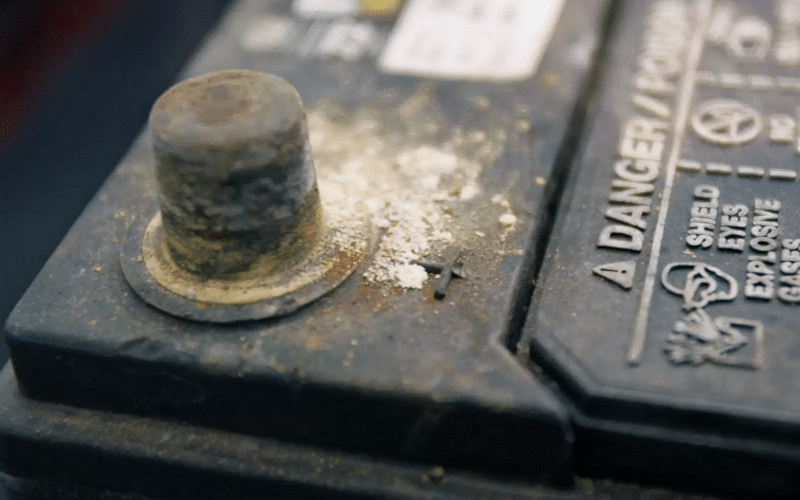
Insufficient voltage level on the contacts of the external charger will lead to a long charge or its complete absence. Its readings are checked with a multimeter.
Car Charger
The charger built into the battery is a generator. When the engine is running, it becomes the main electrical device that supplies voltage. Its performance depends on the speed and level of charging. The most common poor performance problem is loosening of the strap connecting it to the calendar.
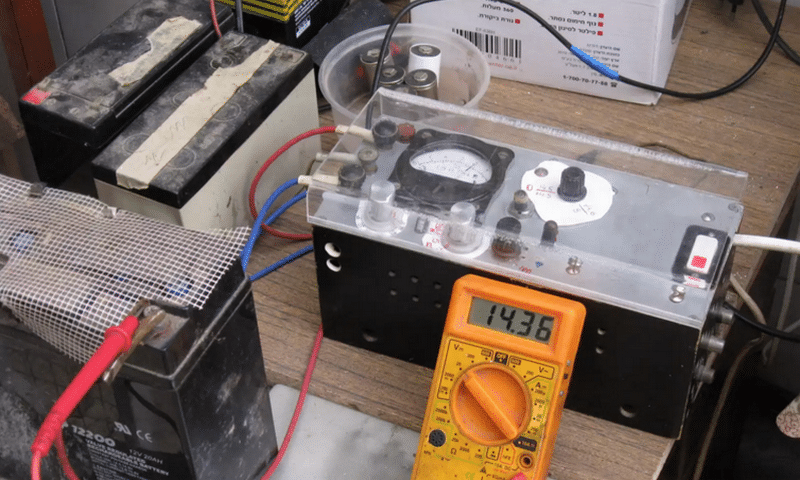
There are problems with the work of the brush on the tension. Their wear or loose fit will lead to insufficient contact for current transfer or its complete absence. It is worth checking the interface of the contacts for the detection of oxides or breaks in the circuit.
Alternator wires oxidized
If the battery is not charging, the cause may also be oxidation of the wires to the generator. In this case, the situation can be corrected by detecting wires. As in the previous case, use sandpaper for this.
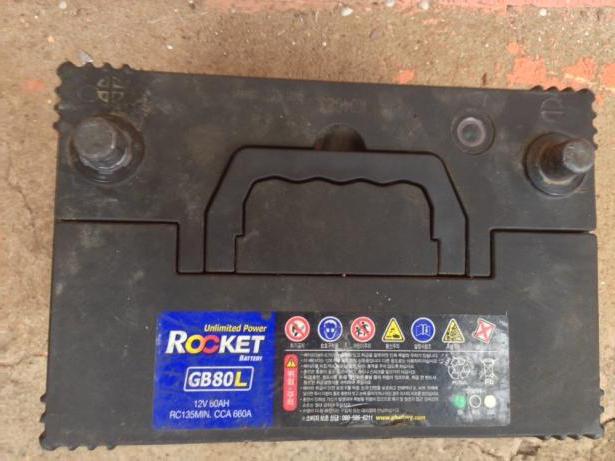 But in addition to oxides, the generator wires can fray or pierce. Most often they burn out due to a voltage drop. This means it will help Gary's signature scent. A simple replacement of the wire in this case is not enough. The reason should be eliminated immediately, because when replacing new elements, you can also overdo it. It is worth remembering about your well-being - the battery is gradually discharged if you do not use it. These are quite normal natural processes.
But in addition to oxides, the generator wires can fray or pierce. Most often they burn out due to a voltage drop. This means it will help Gary's signature scent. A simple replacement of the wire in this case is not enough. The reason should be eliminated immediately, because when replacing new elements, you can also overdo it. It is worth remembering about your well-being - the battery is gradually discharged if you do not use it. These are quite normal natural processes.
How do you know if the battery is not charging?
The battery does not charge from the generator. The first signal that the battery is not being charged is a burning red battery light! And in order to make sure of this, you can check the voltage of the battery. The battery terminals should be 12,5 ... 12,7 V. When the engine is started, the voltage will rise to 13,5 ... 14,5 V. With the consumers turned on and the engine running, the voltmeter readings, as a rule, jump from 13,8 to 14,3V. The absence of changes on the voltmeter display or when the indicator goes beyond 14,6V indicates a malfunction of the generator.
When the generator is running, but not charging the battery, the reason may be hidden in the battery itself. Apparently it was completely discharged, which is called "zero", then the voltage is less than 11V. Zero charge can occur due to sulphated plates. If sulfation is insignificant, you can try to eliminate it. And try to charge with a starting-charger.
How to understand what the battery does not charge from the charger? When the battery is connected to the charger, evidence that it is fully charged is the constantly changing voltage at the terminals and the jumping voltage or current indicators on the dial of the device. If the charge does not go, then there will be no change. When there is no charging to the storage battery from the Orion-type charger (which has only indicators), then very often you can observe the buzzing and rare blinking of the "current" light.
The car battery is not being charged by the generator. Why?
Common reasons when the battery does not charge from the generator are:
- Oxidation of the battery terminals;
- Stretched or broken alternator belt;
- Oxidation of wires on the generator or vehicle ground;
- Failure of diodes, voltage regulator or brushes;
- Sulfation of plates.
Because of what the battery may not be charged from the charger
The main reasons due to which the car battery does not want to be charged not only from the generator but also from the charger can also be 5:
- Deep discharge of the battery;
- Closing one of the cans;
- Overcooling of the battery;
- Very high or low density of the electrolyte;
- Impurities in the electrolyte.
What can be done when the car battery is not charging
The first step is to find out the cause, and only then take action to eliminate it. To do this, you need to measure the voltage at the battery terminals, check the level, density of the electrolyte and its color. It also goes without saying that a visual inspection of the surface of the battery, auto wiring is necessary, and it is also mandatory to determine the current leakage.
Let us consider in detail the possible consequences of each of the reasons for poor battery performance, and also determine the actions that need to be done in a given situation:
Contact terminal oxidation both prevents good contact and promotes current leakage. As a result, we get a fast discharge or unstable / missing charging from the generator. There is only one way out - to check not only the condition of the battery terminals, but also on the generator and the mass of the car. Strongly oxidized terminals can be eliminated by cleaning and lubricating from oxides.
Malfunction in the generator (belt, regulator, diodes).
Broken belt You would probably have noticed, but the point is that even a slight slack in the tension can contribute to slippage on the pulley (as well as oil ingress). Therefore, when powerful consumers are turned on, a light on the panel may light up and the battery will be discharged, and on a cold engine, a squeak is often heard from under the hood. This problem can be eliminated either by stretch or by replacement.
Diodes in a normal state, current should only flow in one direction, checking with a multimeter will make it possible to identify a faulty one, although they often simply change the entire diode bridge. Incorrectly functioning diodes can cause both undercharging and overcharging of the battery.
When the diodes are normal, but they get very hot during operation, it means that the battery is being overcharged. Responsible for stress regulator... It is better to change it right away. In a situation where the battery is not fully charged, you need to pay attention to the generator brushes (after all, they wear out over time).
Deep discharge, as well as with a slight shedding of the active mass, when the battery does not want to be charged not only on the car from the generator, but even the charger does not see it, you can make a polarity reversal or give a high voltage so that it grabs the charge.
This procedure is often carried out with AVG batteries when its terminals are less than 10 volts. The polarity reversal allows a completely discharged battery to start. But this will only help if the poles on the battery have really changed, otherwise you can only do harm.
Changing the battery poles (both lead-acid and calcium) occurs in the case of a complete discharge, when the voltage of some battery cans with a lower capacity than the rest, connected in series, decreases much faster than others. And having reached zero, as the discharge continues, the current for the lagging elements becomes charging, but it charges them in the opposite direction and then the positive pole becomes a minus, and the negative one becomes positive. Therefore, by changing, for a short time, the charger terminals, such a battery can be brought back to life.
But remember that if the pole change on the battery did not occur, then in the absence of protection from such a situation on the charger, the battery can be permanently damaged.
The polarity reversal should be carried out only in cases of the formation of a white coating on the surface of the plates.
This process will not work if:
- the plates crumbled and the electrolyte became cloudy;
- one of the cans is closed;
- there is no required density of electrolyte in the battery.
Desulfation is well done by the polarity reversal method, but only no more than 80-90% of the capacity can be restored. The success of this procedure lies in thick plates, thin ones are completely destroyed.
The density of the electrolyte is measured in g/cm³. It is checked with a densimeter (hydrometer) at a temperature of +25 ° C, it should be 1,27 g / cm³. It is proportional to the concentration of the solution and inversely dependent on the ambient temperature.
If you operate a battery discharged by 50% or less at sub-zero temperatures, this will lead to freezing of the electrolyte and destruction of the lead plates!
Note that the density of the electrolyte in the battery must be the same in all sectors. And if in some of the cells it is greatly reduced, then this indicates the presence of defects in it (in particular, a short circuit between the plates) or a deep discharge. But when such a situation is observed in all cells, then it is a deep discharge, sulfation, or simply obsolescence. A very high density is also not good - it means that the battery was boiling from overcharging due to the failure of the generator. Which also adversely affects the battery. To eliminate problems caused by uneven density, it is necessary to service the battery.
With sulfation there is a deterioration or lack of contact of the electrolyte with the plates. Since the plaque blocks access to the working body, then battery capacity drops dramatically, and recharging it does not give any result. The voltage either increases very slowly or does not change at all. Such the process is irreversible.
But sulfation at the initial stage can be overcome by a series of cycles of a full charge with a small current and a full discharge with a minimum current strength (for example, by connecting a 12V 5W light bulb). Either the most easy way to recover, - pour a solution of soda, which is also capable of removing sulfates from the plates.
Closing one of the cans is a consequence of the collapsed plates and the appearance of sludge at the bottom of the battery. When trying to charge such a battery, there will be a strong bubbling of the electrolyte, as when fully charged. The defective section will boil but not recharge. There is nothing to help here.
The average service life of modern batteries is 4 to 6 years.
Causes of malfunction of starter car batteries
The service life of a 25% discharged battery is significantly reduced by:
- malfunctions of the generator and voltage regulator;
- starter malfunctions leading to an increase in amperage or an increase in the number of attempts to start the engine;
- oxidation of the terminals of the power wires;
- constant use of powerful consumers with long downtime in traffic jams;
- repeated crankshaft rotation with the starter on short trips.
Low electrolyte levels during battery operation are also a key cause of rapid battery failure. Therefore, the cause of the malfunction may be:
- Rare control of electrolyte levels. In the summer, the check should be done more often because the high temperature contributes to the rapid evaporation of water;
- Intensive use of the car (when the mileage is more than 60 thousand km per year). It requires checking the electrolyte level at least every 3-4 thousand km of run.
Graphical representation of the situation when the battery is not being charged. Infographics
